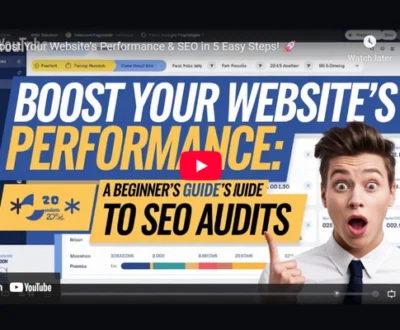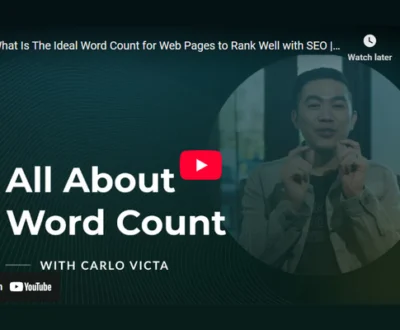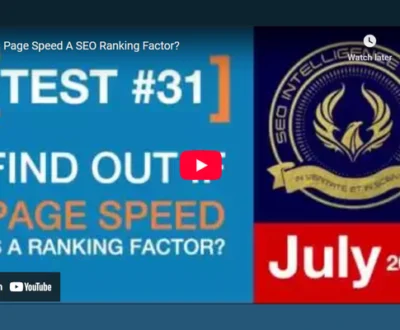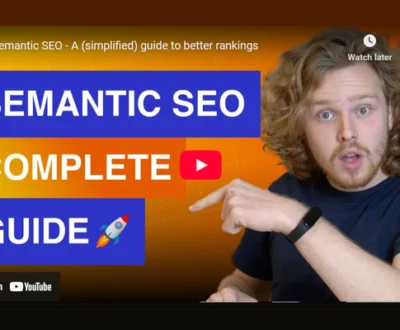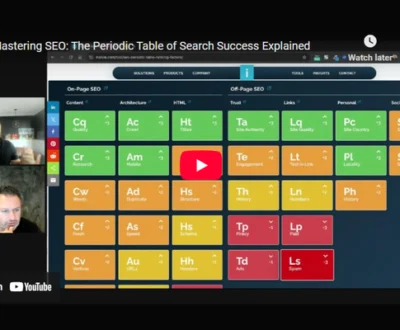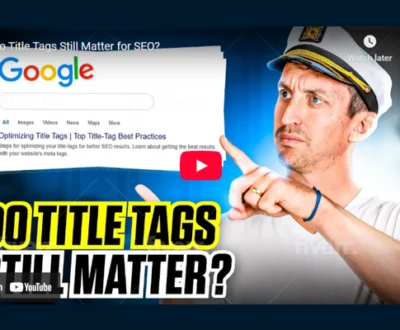I focus keyword strategies for product pages by first identifying core business categories and buyer intent, ensuring keywords match what customers seek at each purchase stage. I use research tools like Ahrefs to find high-value keywords and analyze competitors’ terms to spot gaps. Long-tail keywords play a key role, as they capture specific, conversion-ready searches. Crafting unique, keyword-rich descriptions aligned with user intent enhances relevance and engagement. Optimizing product pages this way boosts visibility and conversions. You’ll find practical insights on refining these strategies further ahead.
- Key Takeaways
- Identifying Core Business Categories for Effective Keyword Targeting
- Utilizing Keyword Research Tools to Discover High-Value Terms
- Analyzing Competitor Keywords to Uncover Market Gaps
- Understanding and Mapping Buyer Intent to Keyword Selection
- The Power of Long-Tail Keywords in Driving Conversions
- Strategic Placement of Keywords in Product Page Elements
- Crafting Unique Product Descriptions That Align With Search Intent
- Enhancing Product Pages With Related Keywords and Synonyms
- Structuring Site Architecture to Support Keyword Relevance
- Monitoring Keyword Performance and Refining Strategies Continuously
- Frequently Asked Questions
- How Do Seasonal Trends Affect Keyword Strategy for Product Pages?
- What Role Do Customer Reviews Play in Keyword Optimization?
- Can Voice Search Change the Way We Choose Product Keywords?
- How to Balance Keyword Optimization With User Experience on Product Pages?
- What Tools Help Track Keyword Impact on Actual Sales Conversions?
- Final Thoughts
Key Takeaways
- Identify buyer intent and group keywords by informational, commercial, and transactional stages for targeted content on product pages.
- Use long-tail keywords with clear purchase intent to boost conversion rates and attract more qualified traffic.
- Craft unique, keyword-rich product descriptions emphasizing benefits, features, and unique selling points to engage and convert visitors.
- Optimize image alt text with relevant keywords to improve SEO and provide better context for search engines.
- Continuously monitor keyword performance and competitor gaps using analytics tools to refine and enhance product page strategies.
Identifying Core Business Categories for Effective Keyword Targeting
To start identifying core business categories for effective keyword targeting, you need to clearly define the primary products or services your business offers. This core category analysis helps pinpoint what your business is truly known for and which offerings generate the most sales or interest. Start with your core offerings by listing broad groups that cover these key products or services.
Next, conduct a customer needs assessment to understand the problems your products or services solve. Group similar items that fulfill related customer needs, creating logical, easy-to-navigate categories. These categories should align with your overall business goals, such as increasing sales or expanding market reach.
Focusing on your core activities allows you to organize your products or services in a way that reflects how customers naturally think and search. Keeping the categories simple and clear can enhance customer understanding and navigation. By clearly defining these core categories, you set a solid foundation for targeting relevant keywords that match customer intent, improving your product pages’ visibility and effectiveness in search results.
Utilizing Keyword Research Tools to Discover High-Value Terms
Although keyword research can seem overwhelming at first, using specialized tools makes the process more manageable and efficient.
I start by entering broad seed keywords related to my products into tools like Ahrefs Keywords Explorer or Google Keyword Planner. These tools offer useful features such as “Keyword Overview” and “Keyword Magic Tool” that generate extensive lists of related terms.
Then, I apply filters based on search volume, keyword difficulty, and user intent to focus on the most valuable keywords. Analyzing metrics like monthly search volume and cost-per-click helps me prioritize terms with high purchase intent. This approach helps ensure that the keywords I select contribute to legitimate user engagement.
I also explore long-tail keywords by using features that uncover specific variations or question-based queries, which often convert better despite lower volume.
Analyzing Competitor Keywords to Uncover Market Gaps
When I analyze competitor keywords, I focus on identifying the terms they rank for that my own site doesn’t, revealing valuable market gaps.
This keyword competitor analysis helps me discover search term opportunities that I might’ve overlooked internally. I start by using SEO tools to compare my site’s keywords against those of true online competitors, filtering to find missing or weak keywords where competitors rank higher.
These gaps show where I can improve or create new content to close ranking gaps and increase search visibility. By prioritizing these opportunities based on relevance, volume, and difficulty, I can strategically target keywords that attract more traffic.
Analyzing competitor keywords also offers insights into audience interests and competitor strategies, enabling me to enhance my content plan effectively.
Understanding and Mapping Buyer Intent to Keyword Selection
When selecting keywords for product pages, it’s important to recognize different buyer intent types, such as informational, commercial, and transactional.
Mapping these intents to the appropriate keywords helps target users at each stage of their buying journey effectively.
Buyer Intent Types
Since understanding buyer intent is essential for effective keyword strategy, I’ll walk you through the main types of intent and how they guide keyword selection.
Recognizing the buyer persona and their search behavior helps me perform intent analysis, identifying whether users seek information, comparison, or are ready to purchase.
By clustering keywords according to intent—informational, commercial, or transactional—I guarantee content alignment with the user journey, filling content gaps that may exist.
Informational queries build awareness, commercial keywords target consideration, and transactional ones focus on conversion.
Applying SEO best practices means matching each keyword cluster to appropriate content types, such as blog posts or product pages.
This approach not only improves relevance but also enhances user experience, ultimately boosting your product pages’ ability to convert visitors into customers.
Intent-Based Keyword Mapping
Although keyword research is a fundamental step, understanding the underlying buyer intent behind each search query is essential for effective keyword mapping.
I analyze user behavior and search patterns to identify intent signals embedded in keywords, such as “buy” or “review.” By conducting SERP analysis, I observe top-ranking content formats, which helps align content with audience segmentation.
I group keywords into clusters based on shared intent, then map them to specific product pages, ensuring content alignment with buyer journey stages. Monitoring search trends and using tools to track intent allows me to refine keyword maps continually.
This structured approach reduces overlap and strengthens page relevance, making product pages more likely to convert by meeting precise user needs at the right moment.
The Power of Long-Tail Keywords in Driving Conversions
Because long-tail keywords target very specific search queries, they tend to drive higher conversion rates compared to broader, short-tail keywords. This is one of the key long tail benefits that make them essential for conversion optimization. Users entering detailed phrases often have a clear intent, which means they’re closer to making a purchase.
Studies show conversion rates for long-tail keywords can be two to five times higher than for generic terms. The specificity also makes it easier to rank higher in search results, especially for smaller businesses facing tough competition.
Additionally, visitors coming through long-tail searches are usually more engaged, spending more time on the page and bouncing less. Although each keyword may have lower search volume, the combined traffic from many long-tail terms can be substantial and more qualified.
Incorporating long-tail keywords into your product pages can consequently improve both the quality and quantity of conversions, making your keyword strategy more effective overall.
Strategic Placement of Keywords in Product Page Elements
I’ll start by showing you how placing keywords strategically in title tags can boost your product page’s visibility and click-through rates.
Then, we’ll explore how well-crafted, keyword-rich descriptions improve both search rankings and user experience.
Finally, I’ll explain the importance of using descriptive image alt text to enhance SEO and accessibility.
Title Tag Optimization
Anyone managing product pages knows how important it’s to optimize title tags with well-placed keywords. Title tags act as the clickable headline in search results, so placing your primary keyword near the beginning is essential.
From my experience, many title tag mistakes involve keyword stuffing or vague phrasing that fails to match user intent. Reviewing strong title tag examples helps me see the value of concise, relevant keywords combined with product attributes like size or color.
I also keep titles between 50-60 characters to avoid truncation, and I separate elements clearly using dashes or pipes. Finally, I guarantee each product page has a unique title tag that accurately reflects its content, boosting both search rankings and click-through rates effectively.
Keyword-Rich Descriptions
Crafting keyword-rich descriptions plays an essential role in enhancing product page visibility and user engagement. When writing these descriptions, I focus on maintaining an appropriate keyword density—typically using the primary keyword one to two times per 100 words—to avoid keyword stuffing while supporting semantic relevance.
This means I naturally integrate related terms and synonyms to help search engines better understand the context. I also prioritize benefits over just features, crafting detailed, unique descriptions of 300+ words to provide ample keyword opportunities.
Using clear, structured headings and incorporating keywords in bullet points further improves readability and search relevance. By balancing keyword presence with meaningful content, I guarantee descriptions are both user-friendly and optimized to attract the right audience.
Image Alt Text
While keyword-rich descriptions lay the foundation for product page optimization, strategically placing keywords in image alt text further enhances a page’s SEO value.
Following proper alt text guidelines guarantees your product images are accessible and informative. I recommend these four steps:
- Use concise, descriptive phrases that accurately portray the product, including color, material, or angle.
- Naturally incorporate relevant keywords without stuffing, focusing on clarity and context.
- Avoid redundant terms like “image of”; instead, describe the product and its features directly.
- Leave decorative images with empty alt attributes (`alt=””`) to maintain accessibility without confusion.
Crafting Unique Product Descriptions That Align With Search Intent
Because product descriptions serve as a direct interface between your offerings and potential buyers, aligning them with search intent is essential for effective SEO and user engagement.
When crafting these descriptions, I focus on understanding whether users are ready to buy or still comparing options. For transactional intent, I use persuasive language like “order now” and clearly highlight features, benefits, and pricing.
For commercial investigation, I emphasize unique selling points and incorporate user reviews to build trust. Including specific product details alongside testimonials helps users make informed decisions.
I also structure content with clear titles and bullet points, ensuring readability and relevance. This approach not only meets the users’ needs but also improves search rankings by signaling relevance to search engines.
Enhancing Product Pages With Related Keywords and Synonyms
Using synonyms and related terms on product pages can greatly improve SEO by making content more relevant to various search queries.
I find that integrating these keywords naturally helps search engines understand the context better, which boosts rankings.
This approach also broadens your reach by capturing different ways customers might search for the same product.
Synonyms Boost SEO
Although many focus on exact keywords, integrating synonyms into product pages can greatly enhance SEO by broadening the range of search queries your content matches.
Using a synonym variety improves semantic relevance, helping search engines understand your content’s context better. Here’s why this matters:
- It increases your page’s relevancy for diverse search terms, capturing a wider audience.
- Synonyms prevent keyword stuffing, making descriptions natural and easier to read.
- They help align your content with user intent, boosting ranking potential for niche searches.
- Proper synonym placement in headings and metadata structures your content, emphasizing key terms effectively.
Related Terms Integration
When I integrate related terms and synonyms into product pages, I make sure to contemplate how these words provide additional context that goes beyond the primary keywords. Related terms, often called semantic keywords, help search engines grasp the full topic and user intent behind a page.
I use tools like Google Keyword Planner to find these terms and weave them naturally into titles, headings, and descriptions. This approach not only improves content relevance but also enhances user experience by addressing varied search queries.
Properly integrated semantic keywords can increase page authority and attract more targeted traffic, which often leads to higher conversion rates. It’s important to balance related terms carefully, avoiding keyword stuffing, while focusing on genuinely relevant words that support the primary keyword’s intent.
Structuring Site Architecture to Support Keyword Relevance
Because site architecture lays the foundation for how content is organized, it plays an essential role in supporting keyword relevance across your product pages. A clear content hierarchy and intuitive site navigation guide both users and search engines from broad topics to specific products, enhancing keyword targeting.
Here’s how I structure site architecture to boost keyword relevance:
- Organize content using a logical hierarchy, aligning broad keywords with top-level pages and specific keywords with deeper pages.
- Design site navigation to reflect this hierarchy, making it easy for visitors to find products and for search engines to crawl your site.
- Use keyword-rich, descriptive URLs that mirror the content hierarchy, improving clarity and SEO.
- Implement internal linking that connects parent, child, and sibling pages using relevant anchor text, distributing authority and reinforcing topical relevance.
This approach guarantees keyword strategies integrate seamlessly into your website’s framework, improving both search visibility and user experience.
Monitoring Keyword Performance and Refining Strategies Continuously
To maintain effective keyword strategies, I continuously monitor performance and refine my approach based on data insights. I track core metrics like keyword rankings, organic clicks, CTR, and conversion rates using tools like Google Search Console and Google Analytics.
These performance insights reveal which keywords drive traffic and conversions, highlighting areas needing improvement. I analyze trends over time and segment data by device or location to spot specific opportunities.
Competitor benchmarking helps me identify gaps where I can expand content or optimize existing pages. Based on these insights, I make strategy adjustments such as updating keyword lists, improving on-page content, and shifting focus toward higher-potential terms.
I also address issues like keyword cannibalization and technical SEO problems that impact visibility. By establishing a regular monitoring schedule, I guarantee my keyword strategy evolves continuously, staying aligned with changing search behaviors and business goals.
This ongoing refinement is key to maintaining product page relevance and boosting conversions.
Frequently Asked Questions
How Do Seasonal Trends Affect Keyword Strategy for Product Pages?
Seasonal keywords shift demand, so I rely on trend analysis to adjust product pages ahead. This helps me capture timely traffic and conversions by matching what shoppers seek during holidays or events, boosting relevance and sales.
What Role Do Customer Reviews Play in Keyword Optimization?
Oh, because customers always speak robot, right? Actually, reviews boost keyword relevance by revealing real language people use. Their review impact helps you tap authentic terms, making your content more relatable and search-friendly.
Can Voice Search Change the Way We Choose Product Keywords?
I believe voice search definitely changes keyword selection because it favors natural, conversational phrases. So, I focus on long-tail, question-based keywords to match how people speak, making product pages more discoverable and user-friendly.
How to Balance Keyword Optimization With User Experience on Product Pages?
I balance keyword density by weaving terms naturally, avoiding overuse that hurts user engagement. I focus on clear, helpful content that answers questions, ensuring visitors stay longer and convert without feeling overwhelmed or distracted.
What Tools Help Track Keyword Impact on Actual Sales Conversions?
Imagine keyword tracking as a compass guiding you through a dense forest of data. I rely on tools like Google Analytics and Ruler Analytics for conversion analysis, revealing which keywords truly lead customers to purchase paths.
Final Thoughts
So, if you want product pages that actually convert, just sprinkle some magic with keyword research, buyer intent, and competitor analysis—because who doesn’t love a little detective work before buying? Remember, long-tail keywords and unique descriptions aren’t just buzzwords; they’re your secret weapons. Keep tweaking your strategy like a scientist obsessed with data, and you’ll turn browsers into buyers without breaking a sweat. Easy, right? Now, go optimize with confidence!
Windee Tan is a seasoned SEO Specialist with over a decade of experience helping businesses grow their organic visibility through data-driven strategies. He specializes in technical SEO, content optimization, and local search, with deep knowledge of tools like GA4, GSC, SEMrush, and Screaming Frog. Windee is passionate about translating complex SEO insights into practical tactics that drive real-world results. When he's not auditing sites or crafting keyword strategies, he’s exploring the latest trends in AI, digital marketing, and productivity.
About this blog
We are a digital marketing company with a focus on helping our customers achieve great results across several key areas.
Request a free quote
We offer professional SEO services that help websites increase their organic search score drastically in order to compete for the highest rankings even when it comes to highly competitive keywords.
Subscribe to our newsletter!
More from our blog
See all postsRecent Posts
- Writing Clear Calls to Action That Boost On-Page SEO 21 August 2025
- Why Word Count Still Matters in On-Page SEO Today 20 August 2025
- Why Site Speed Is Critical for On-Page SEO Success 19 August 2025


